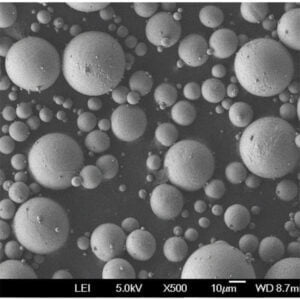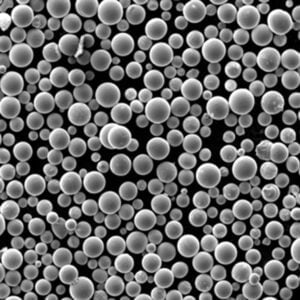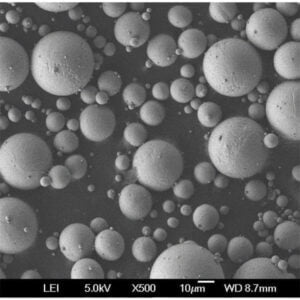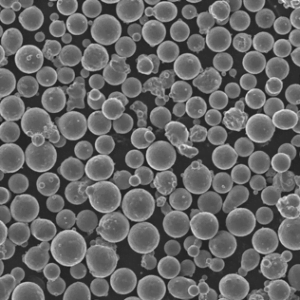Spherical tungsten powder
Table of Contents
Imagine a material so dense it could rival a black hole in a teaspoon, yet so fine it flows like sand. That’s the magic of spherical tungsten powder, a marvel of engineering that’s revolutionizing industries from aerospace to medicine. But what exactly is this wonder material, and how does it achieve its unique properties? Buckle up, because we’re diving deep into the world of spherical tungsten powder!
An Overview of Spherical Tungsten Powder
Spherical tungsten powder is a type of metal powder specifically engineered with perfectly round particles. Unlike irregular-shaped powders, these tiny spheres offer a unique combination of properties:
- High Density: Tungsten itself is incredibly dense, but the spherical shape maximizes packing efficiency, creating an even denser material. Think of it like packing oranges – spheres leave minimal empty spaces, unlike oddly shaped fruits.
- Superior Flowability: The spherical particles glide effortlessly past each other, making the powder flow freely. This is crucial for applications like 3D printing and metal injection molding, ensuring consistent material deposition.
- Enhanced Strength: The smooth, round shape minimizes stress concentrations within the powder bed, leading to stronger and more durable final products. Imagine building a brick wall – smooth, even bricks create a more robust structure compared to a wall with unevenly shaped bricks.
- Excellent Thermal Properties: Tungsten boasts exceptional heat resistance, and the spherical shape further optimizes heat transfer. This makes spherical tungsten powder ideal for high-temperature applications.
These remarkable properties make spherical tungsten powder a game-changer across various fields. But to truly appreciate its versatility, let’s delve into the nitty-gritty with some helpful tables!
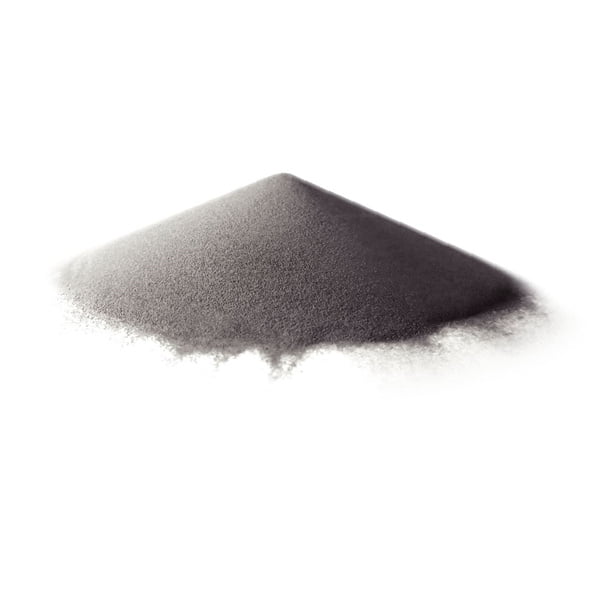
Properties, Applications, and Beyond
Now, let’s explore the different types of spherical tungsten powder, their properties, and the applications where they shine:
| Type of Spherical Tungsten Powder | Composition | Key Properties | Characteristics |
|---|---|---|---|
| Pure Tungsten (W) | 99.5% minimum tungsten | High density, melting point, thermal & electrical conductivity | Excellent for electrical contacts, heat sinks, and filaments |
| Nickel-Tungsten (NiW) | Varies depending on Ni content (typically 7-12% Ni) | High density, good strength & ductility, emission properties | Ideal for cathode applications in electron tubes and field emission displays |
| Copper-Tungsten (CuW) | Varies depending on Cu content (typically 10-30% Cu) | High density, good thermal conductivity & electrical conductivity | Used for electrical contacts, heat sinks, and electrodes requiring high thermal management |
| Chromium-Tungsten (CrW) | Varies depending on Cr content (typically 1-3% Cr) | High density, good strength & oxidation resistance | Favored for applications requiring high-temperature strength and wear resistance, like rocket nozzles |
| Silver-Tungsten (AgW) | Varies depending on Ag content (typically 10-20% Ag) | High density, excellent electrical conductivity & arc erosion resistance | Perfect for electrical contacts requiring high conductivity and resistance to electrical arcing |
Applications of Spherical Tungsten Powder
| Application | Material Choice (Typical) | Reasoning |
|---|---|---|
| 3D Printing of Metal Parts | Pure W, NiW, CuW | High density & flowability for intricate designs, good thermal properties for heat dissipation during printing |
| Metal Injection Molding (MIM) | Pure W, NiW, CuW | Excellent flowability for complex geometries, good strength for demanding applications |
| Thermal Management | Pure W, CuW | High thermal conductivity for efficient heat transfer in heat sinks and electronic components |
| Electrical Contacts | Pure W, AgW | High electrical conductivity & strength for reliable current transmission |
| Electrodes | Pure W, CuW, CrW | High melting point, good thermal conductivity & strength for withstanding harsh electrical environments |
| Ballistic Applications | Pure W, W-based alloys | High density for increased projectile penetration |
Specifications, Sizes, Grades, and Standards:
Spherical tungsten powder comes in a variety of specifications, tailored for diverse applications. Let’s delve into the key aspects to consider:
- Particle Size: This refers to the diameter of individual spherical particles. The typical range for spherical tungsten powder is 5 to 150 microns. Here’s a breakdown of how size selection influences applications:
- Finer Particles (15-45 microns): Ideal for intricate details and smooth finishes in 3D printing. These particles enable precise layer-by-layer deposition, creating high-resolution prints.
- Mid-Range Particles (45-100 microns): Well-suited for a balance between detail and flowability in 3D printing and metal injection molding (MIM). They offer good resolution while maintaining good flow characteristics for efficient powder deposition.
- Larger Particles (100-150 microns): Often preferred in MIM for applications where intricate features are less critical. These larger particles provide excellent flowability for complex mold filling during MIM processes.
- Purity Grade: This indicates the percentage of tungsten (W) in the powder. Common grades include:
- 99.5% W: A widely used grade for various applications, offering a good balance between cost and performance.
- 99.9% W (and higher): High-purity grades are tercihsed (preferred) for demanding applications requiring exceptional electrical conductivity, thermal properties, or minimal contamination.
- Standards: Several industry standards govern the specifications and quality of spherical tungsten powder. Some prominent standards include:
- ASTM International (ASTM): Develops technical standards for various materials, including metal powders like tungsten. ASTM standards for spherical tungsten powder address factors like particle size distribution, chemical composition, and flowability.
- Military Standards (MIL): These standards set strict requirements for materials used in military applications. Specific MIL standards might exist for spherical tungsten powder used in defense-related components.
- Manufacturer Specifications: In addition to industry standards, individual manufacturers might have their own specifications for spherical tungsten powder. These specifications can provide detailed information about particle size distribution, purity levels, and other relevant characteristics.
By considering these factors – particle size, purity grade, and relevant standards – you can select the optimal spherical tungsten powder for your specific application.
Suppliers, Pricing
Now that we’ve explored the properties and applications of spherical tungsten powder, let’s get down to the practicalities. Here’s a breakdown of suppliers, pricing, and the trade-offs you need to consider:
Suppliers of Spherical Tungsten Powder:
The global market for spherical tungsten powder is vast, with numerous reputable suppliers. Here are some prominent players:
- American Elements (US): Offers a wide variety of spherical tungsten powder grades and sizes, catering to diverse applications.
- HC Starck Tungsten (Germany): A global leader in tungsten products, providing high-purity spherical tungsten powder for demanding applications.
- PlasmaChem GmbH (Germany): Specializes in high-performance metal powders, including spherical tungsten for additive manufacturing and other advanced technologies.
- Sandvik Hyperion (Sweden): A renowned manufacturer of tungsten products, offering spherical tungsten powder for various industrial applications.
- China Tungsten High-Tech Corporation (China): A major player in the tungsten market, providing cost-competitive spherical tungsten powder options.
Pricing:
Pricing for spherical tungsten powder can vary depending on several factors:
- Purity: Higher purity grades (e.g., 99.9% W) generally command a premium compared to lower purity grades.
- Particle size: Finer particles (less than 45 microns) tend to be more expensive due to the increased processing complexity.
- Quantity: Bulk purchases typically offer lower per-unit costs compared to smaller quantities.
- Supplier: Different suppliers might have varying pricing structures based on their production capacity and market positioning.
It’s crucial to obtain quotes from several suppliers to compare pricing and negotiate the best possible deal.
Pros and Cons of Spherical Tungsten Powder
Spherical tungsten powder boasts numerous advantages, but it’s not without its limitations. Let’s weigh the pros and cons to help you make informed decisions:
Pros:
- Exceptional Properties: High density, superior flowability, enhanced strength, and excellent thermal properties make it ideal for demanding applications.
- Versatility: Applicable across diverse fields like 3D printing, metal injection molding, electronics, and more.
- Improved Performance: Enables the creation of high-performance components with superior strength, thermal management, and electrical conductivity.
- Design Flexibility: Spherical particles facilitate intricate geometries in 3D printing and MIM, unlocking new design possibilities.
Cons:
- Cost: Spherical tungsten powder can be significantly more expensive compared to irregular-shaped tungsten powders.
- Handling Precautions: Tungsten dust poses health risks, necessitating proper handling and safety protocols during processing.
- Environmental Impact: Tungsten mining and processing can have environmental implications, so responsible sourcing is crucial.
The choice of using spherical tungsten powder hinges on your specific application requirements and budget constraints. For high-performance applications where superior properties are paramount, the benefits often outweigh the cost. However, for less demanding applications, alternative, more cost-effective tungsten powder options might be suitable.
Remember, a thorough cost-benefit analysis considering your project’s needs will help you determine if spherical tungsten powder is the right choice.

FAQ
Here are some frequently asked questions regarding spherical tungsten powder, presented in a clear table format for your convenience:
| Question | Answer |
|---|---|
| What are the advantages of spherical tungsten powder over irregular-shaped tungsten powder? | Spherical particles offer superior flowability, minimize stress concentrations, and enhance packing density, leading to improved performance in various applications. |
| Is spherical tungsten powder safe to handle? | Tungsten dust inhalation can be harmful. Proper safety protocols, including respiratory protection and dust control measures, are essential during handling. |
| How is spherical tungsten powder produced? | Various methods like chemical vapor deposition (CVD), hydrogen reduction, and water atomization are used to produce spherical tungsten powder. |
| Can spherical tungsten powder be recycled? | Yes, tungsten is a highly recyclable metal. Recycled tungsten powder can be used to create new spherical powder, promoting sustainability. |
| What are some emerging applications of spherical tungsten powder? | Research is ongoing to explore spherical tungsten powder in areas like radiation shielding, armor materials, and even heat pipes for thermal management in space applications. |
By understanding the properties, applications, and considerations surrounding spherical tungsten powder, you’re well-equipped to evaluate its suitability for your specific needs. From its impressive strength to its intricate design capabilities, spherical tungsten powder is a truly remarkable material shaping the future of various industries.
Share On
MET3DP Technology Co., LTD is a leading provider of additive manufacturing solutions headquartered in Qingdao, China. Our company specializes in 3D printing equipment and high-performance metal powders for industrial applications.
Inquiry to get best price and customized Solution for your business!
Related Articles
About Met3DP
Recent Update
Our Product
CONTACT US
Any questions? Send us message now! We’ll serve your request with a whole team after receiving your message.

Metal Powders for 3D Printing and Additive Manufacturing
COMPANY
PRODUCT
cONTACT INFO
- Qingdao City, Shandong, China
- [email protected]
- [email protected]
- +86 19116340731






